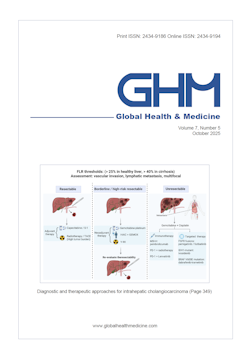Global Health & Medicine 2024;6(6):383-393.
Suicide attempt and self-harm among hospitalized children in Japan: A nationwide inpatient database study
Kita S, Morita K, Watanabe H, Michihata N, Morisaki M, Yamaji N, Ikeda M, Yasunaga H
This study aims to delineate the characteristics and clinical trajectories of suicide attempts and self-harm, and its gender and age differences among children. This nationwide retrospective cross-sectional study utilized data extracted from the Japanese Diagnosis Procedure Combination inpatient database spanning 2016 to 2017. Children aged 7-17 years admitted to acute care hospitals for suicide attempts and self-harm, were identified. Patient characteristics included age, gender, suicide method, and comorbid psychiatric disorders. Trajectory information included the duration of hospital stay, admission ward, psychiatric/psychological interventions, in-hospital mortality, and healthcare expenditure. Data analysis encompassed 1,704 children hospitalized for suicide attempts and self-harm. Among these, 49.4% were junior high school age, 69.0% for female, and 28.4% for underweight. Overdose emerged as the most prevalent method for suicide attempts and self-harm (49.9%). Notably, 66.0% did not receive a diagnosis of any mental illness, and 56.3% did not undergo psychiatric/psychological care during their hospitalization. Boys were more likely to use high-lethality suicide methods, such as hanging (p < 0.001), and die during hospitalization (p < 0.001). Conversely, girls were more likely to use low-lethality suicide methods, such as drug overdose (p < 0.001), and receive psychiatric/psychological intervention during hospitalization (p = 0.015). Children aged 7-12 years were more likely to use high-lethality suicide methods, such as hanging (p < 0.001), and be diagnosed with attention-deficit/hyperactivity disorder (p < 0.001) and less likely to receive psychiatric/psychological intervention (p = 0.005) compared with other age groups. These findings suggest the importance of developing gender and age sensitive health policies, systems, and interventions to prevent child suicide.
DOI: 10.35772/ghm.2024.01052







